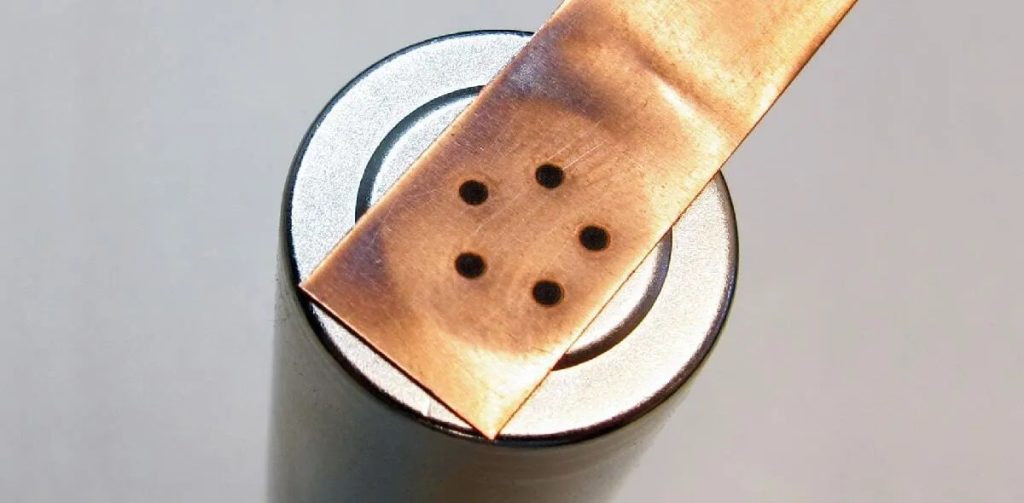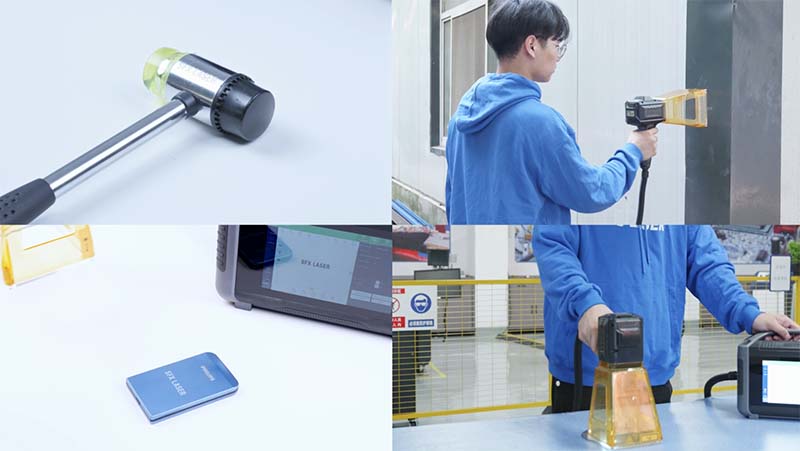Can you laser weld copper? Laser welding technology is gaining prominence in the welding field, when applied to copper materials, we face unique challenges. This article delves into the intricacies of laser welding copper, aiming to uncover the professional techniques involved and provide insights for expanding the application of laser welding in heterogeneous material connections. By comparing the techniques for welding copper with different materials such as stainless steel and aluminum, we gain a profound understanding of the flexibility in laser welding.
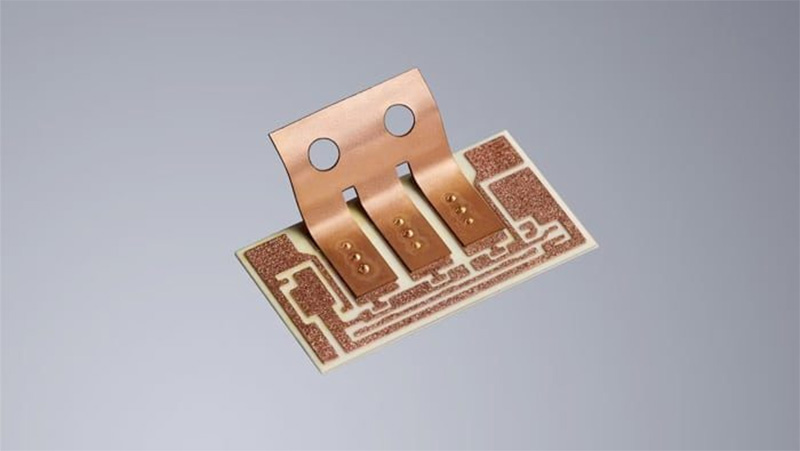
Laser welding is a high-precision welding technique for a wide range of materials, including thin copper metals.
But some difficulties in laser welding copper:
1. The high reflectivity of copper material makes it difficult to focus the laser beam and heat the copper material.
2. the thermal conductivity of copper material is large, resulting in laser welding requires a large heat input, while the laser heating is more concentrated, cannot effectively make up for the heat loss of copper material.
3. Pure copper is a metal material with good ductility and flexibility, and its processing can easily lead to bending and deformation.
4. The surface state of copper sheet is different, resulting in the need to adjust the parameters and process according to the different surface treatment when laser welding.
Copper is a good conductive material with good thermal conductivity and corrosion resistance, and is widely used in electronic component, electrical appliances, aerospace, automotive and other fields. The welding of copper is a difficult task because of its high thermal conductivity, which leads to rapid heat dissipation during welding, and the formation of the weld is greatly affected. Can you laser weld copper?
In the actual application, you should choose the appropriate power laser welding machine according to the specific situation, avoid using low power laser welding machine, resulting in the inability to reach the melting point of the copper plate. Before welding, clean and treat the copper plate, control the welding speed and welding depth.
Tips for Copper Laser Welding
Changing the properties of copper materials: To enhance the effectiveness of laser welding when welding copper materials, various measures can be taken, such as the addition of alloying elements or plating. The addition of alloying elements helps to lower the melting point of copper and improve its resistance to oxidation, while the use of plating enhances the thermal conductivity and stability of copper materials.
Application of auxiliary materials: Auxiliary materials such as brazing materials, filler wires and coatings are introduced for composite welding. These materials are added during the laser welding process to achieve gap filling, interface activation and defect repair of thin copper sheets, while enhancing the mechanical properties and corrosion resistance of the weld.
Pre-treatment: Before laser welding, surface treatment technology is used to make physical or chemical changes to the thin copper sheet, such as cleaning, grinding, plating and oxidation. Such pretreatment can effectively improve the effect of laser welding.
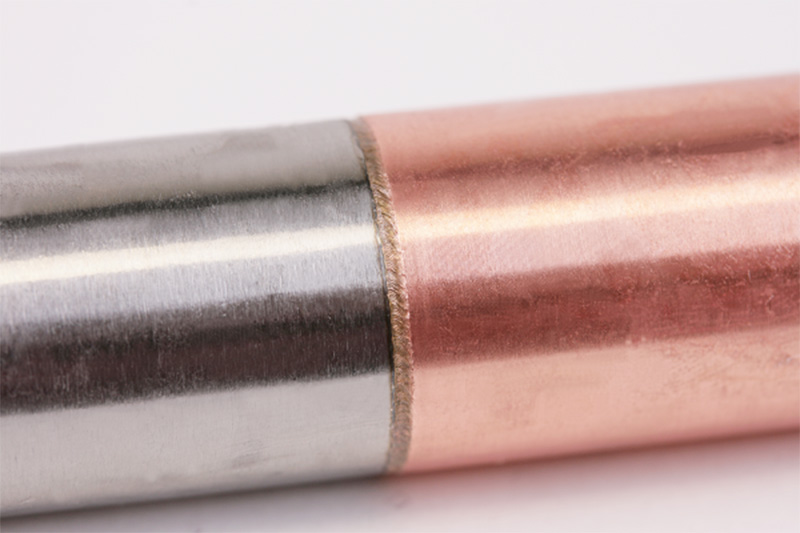
Laser Welding Copper to Stainless Steel
Because stainless steel possesses high reflectivity and excellent corrosion resistance, the welding process becomes more challenging. When laser welding stainless steel, the high reflectivity can result in a significant portion of the laser energy being reflected, hindering the welding progress. However, by employing suitable additives and precisely controlling parameters such as laser power and welding speed, it is still possible to successfully use laser welding for copper and stainless steel.

Laser Welding Copper to Aluminum
Laser welding copper and aluminum is a challenging task because both metals have low melting points, superior thermal conductivity, and large heat diffusion coefficients that make them susceptible to thermal deformation and oxidation. So, what methods should we take when laser welding copper and aluminum?
1. Control heat input: Due to the high thermal conductivity and heat diffusion coefficient of copper and aluminum, the heat input during the laser welding process must be precisely controlled to avoid thermal deformation and oxidation caused by excessive heat.
2. Preheating: Before laser welding, copper and aluminum are preheated to increase the temperature and reduce the thermal stress during the welding process, thus reducing the occurrence of thermal deformation.
3. Protective gas: Use protective gas such as argon or nitrogen during the laser welding process to prevent copper and aluminum oxidation. Ensure that the flow rate, pressure and quality of the protective gas meet the requirements to guarantee the quality and stability of the weld.
4. Welding parameters: According to the copper and aluminum material, thickness and welding requirements, select the appropriate welding parameters, including laser power, welding speed and defocusing amount.
5. Welding position: The laser welding of copper to aluminum can be butt, lap or angle welding and other different welding positions. According to the actual situation to choose the appropriate welding position to ensure the quality and stability of the weld.
6. Cooling device: Cooling device is used to cool the welded parts during the welding process to reduce thermal stress and minimize the occurrence of thermal deformation. This helps to maintain the stability of the welding process.
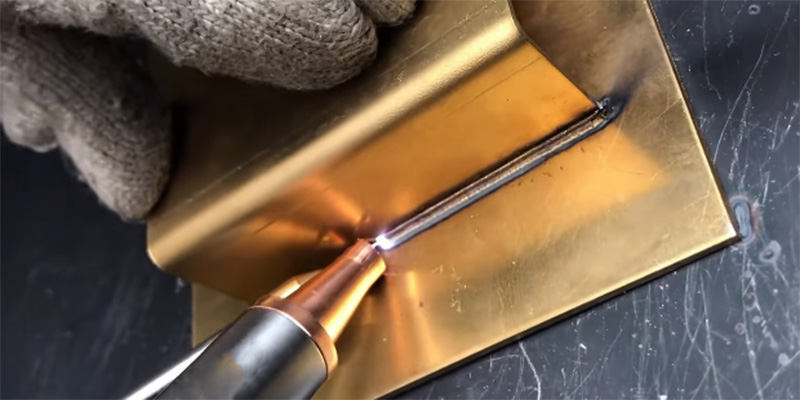
How to Use Laser Weld Copper?
1. Preparation: Accurately place the copper metal material on the welding table of the laser welding machine and adjust the position so that it is accurately aligned with the focusing lens.
2. Start the equipment: Turn on the laser welding machine to ensure that the equipment is in normal operating condition.
3. Parameter Adjustment: Gradually adjust the laser power, pulse width, pulse frequency and other key parameters to achieve the best welding effect. This usually requires some tests and adjustments to suit the specific copper material and welding requirements.
4. Monitoring the welding process: During the welding process, continuous observation of the weld is carried out to ensure the quality of the weld. The formation of the weld seam is checked by means of a real-time monitoring system or visual observation.
5. Remove welded material: Remove the finished copper metal material from the welding table and prepare it for subsequent processing.
6. Cooling process: The welded copper metal material is placed on a cooling rack for natural cooling until it reaches room temperature. This helps to stabilize the temperature of the weld area.
7. Quality Inspection: Carefully inspect the welded copper metal material for defects such as porosity, cracks, etc. Repair treatment is carried out if necessary.
8. Processing: Process the welded copper metal material by shearing, grinding, etc. as needed to meet the requirements of the final product.
Battery Laser Welding Copper
Metal laser welding machines are widely used in the production of power batteries, and excel especially in joining copper and brass. This technology not only successfully welds electroplated nickel to copper materials, but also excels when working with materials commonly found in lithium batteries, including copper flakes, aluminum flakes, nickel flakes, copper and nickel tab, copper foils, aluminum tabs, aluminum foils, aluminum-nickel composite tabs, and more.
The extensive use of laser welding in power battery manufacturing covers many aspects of joining copper conductors and is designed to improve weld quality, efficiency and precision. In the manufacturing process of power batteries, copper materials are commonly used to make key components such as battery cells, battery wires, and connectors. This application ranges from the cell to the battery module to the entire battery pack.

Application of Laser Welding in Power Battery
Battery Cell Connection: In power batteries, battery cells are typically composed of multiple stacked thin sheets. Laser welding can be employed to achieve connections between these battery cells. Through laser welding, it ensures high-strength, low-resistance connections, thereby enhancing the overall performance of the battery.
Battery Module Assembly: Power batteries are usually comprised of multiple battery modules, each containing several battery cells. Laser welding can be used to connect internal wires, connectors, and terminals within the battery modules, ensuring efficient conduction of current and signal connections.
Copper Foil Connection: In power batteries, copper foil is used to create electrodes for battery cells. Laser welding can be applied to connect these copper foils, ensuring excellent conduction of current. This is crucial for improving the efficiency and stability of the battery’s charging and discharging processes.
Battery Pack Encapsulation: Laser welding can also be applied to the encapsulation process of battery packs. By laser welding sealing materials, highly precise welding edges can be achieved, ensuring that the internal environment of the battery pack remains unaffected by external conditions, thus enhancing the safety and stability of the battery.
Welding of Temperature-Sensitive Materials: Due to the minimal heat impact of laser welding, it is suitable for welding temperature-sensitive materials. In lithium batteries, some components may use temperature-sensitive materials, and laser welding can help minimize adverse effects on these materials.
Copper Laser Welding Machine
This laser welding machine utilizes a high-power fiber laser generator, characterized by high energy efficiency, superior beam quality, and high-precision control of laser beam parameters. Its high-power and focused laser energy make it an ideal choice for welding copper and brass.

| Laser Power | 1000W | 1500W | 2000W | 3000W |
| Laser Type | Fiber laser | |||
| Range of Adjustable Power | 1-100% | |||
| Laser Wavelength | 1064nm | |||
| Way of Working | Continuous/Modulation | |||
| Speed Range | 0-120mm/s | |||
| Repeat Precision | ±0.01mm | |||
| Welding Gap Requirements | ≤0.5mm | |||
| Cooling Water | Industrial thermostatic water tank | |||
The beam quality is outstanding, ensuring that the laser beam can be stably and precisely focused, thereby achieving accurate and high-quality welding results.
The laser welding system can precisely control laser power and pulse duration, adapting to the specific welding requirements of copper materials in the optimal way, ensuring a consistent supply of high-quality welding.
The user interface is intuitive and user-friendly, allowing operators to easily set welding parameters, monitor the welding process, and make real-time adjustments as needed.
It is equipped with an efficient cooling system to keep the laser generator at the optimal operating temperature, effectively preventing overheating issues and ensuring the equipment maintains a good condition during prolonged use.
It offers a variety of laser power options to meet different copper thicknesses and welding requirements, providing users with more flexible choices. This laser welder is committed to delivering efficient, precise, and reliable welding solutions in various aspects.
Laser Welding Machine Manufacturers
Dapeng Laser is a leading laser welding machine manufacturer in China, specializing in producing high performance laser welding machines. We are equipped with high quality laser generators to ensure superior beam quality and small, focused spot size for precise and efficient welding processes. Our laser welding machines are available in a wide range of power from 1000 watts to 3000 watts and offer a wide selection of parameters to meet different welding needs.
With an experienced, complete and efficient R&D team, we have customized laser welding equipment for more than 60 industries around the world, ensuring that we provide the most applicable laser welding solutions for a wide range of industries. We are committed to continuous innovation to promote the development of laser welding technology and provide customers with excellent products and services.
In a word, uniquely positioned to handle complex designs and delicate copper components, laser welder for copper is used in a wide range of industries, including manufacturing and construction, to provide advanced welding solutions that ensure superior performance and reliability.
